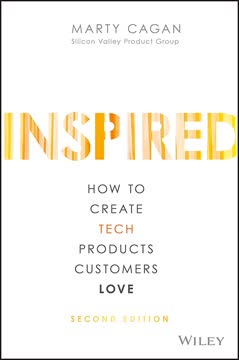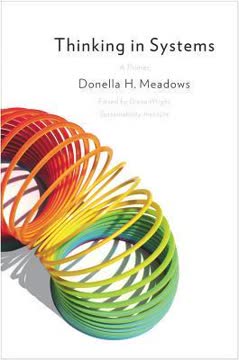Key Takeaways
1. Design Thinking: The New Competitive Advantage
"If you wanna innovate, you gotta design."
Design is the new business imperative. In today's rapidly changing market, traditional management models are becoming obsolete. Design thinking offers a powerful alternative, driving innovation, brand loyalty, and sustainable profits. It's not just about creating beautiful products; it's a holistic approach to problem-solving that can transform entire organizations.
Key elements of design thinking:
- Empathy: Understanding customer needs and desires
- Intuition: Seeing the big picture and making connections
- Imagination: Generating creative solutions
- Idealism: Striving for meaningful impact
Design thinking empowers companies to tackle "wicked problems" - complex challenges that defy simple solutions. By embracing this approach, businesses can differentiate themselves, create delightful customer experiences, and stay ahead of the competition.
2. From Industrial Age to Creative Era: The Rise of Design-Driven Innovation
"We've been getting better and better at a management model that's getting wronger and wronger."
The old paradigms are breaking down. The Industrial Age focus on efficiency and mass production is no longer sufficient. We're entering a Creative Era where innovation, differentiation, and customer-centricity are paramount. This shift requires a fundamental change in how businesses operate and create value.
Key transitions:
- From command-and-control to vision and creativity
- From role-oriented jobs to project-oriented collaboration
- From risk-aversion to embracing calculated risks
- From siloed departments to cross-functional teams
Companies that successfully navigate this transition will be better equipped to address emerging challenges like sustainability, rapidly changing consumer preferences, and disruptive technologies. Design-driven innovation provides the tools and mindset to thrive in this new landscape.
3. Aesthetics: The Language of Customer Delight
"We ascribe beauty to the things we admire, then we begin to admire things that exhibit the same beauty."
Beauty is more than skin deep. Aesthetics play a crucial role in creating products, services, and experiences that resonate with customers on an emotional level. It's not just about visual appeal; it's about crafting holistic experiences that engage all the senses and align with customers' values.
Elements of aesthetic design:
- Integrity: Standing out clearly from the background
- Harmony: How parts relate to the whole
- Radiance: The pleasure we feel from the experience
By incorporating aesthetics into every aspect of the business - from product design to organizational culture - companies can create a powerful emotional connection with customers, fostering loyalty and differentiation in crowded markets.
4. Building a Culture of Nonstop Innovation
"In a company with an innovative culture, radical ideas are the norm, not the exception."
Innovation must be embedded in company DNA. Creating a culture of nonstop innovation requires more than just occasional brainstorming sessions. It demands a systematic approach that encourages creativity at all levels of the organization and makes innovation a core part of everyday operations.
Key strategies for fostering innovation:
- Articulate a compelling vision that inspires employees
- Encourage risk-taking and learn from failures
- Implement branded training programs to develop creative skills
- Create dedicated innovation centers or labs
- Establish cross-functional "genius teams" to tackle complex problems
By making innovation a central part of the company culture, businesses can create a self-sustaining engine of creativity that drives continuous improvement and breakthrough ideas.
5. The Power of Collaborative Design
"The ability to multiply talent by working in teams is at the core of continuous innovation."
Collaboration amplifies creativity. While individual genius has its place, the most powerful innovations often emerge from diverse teams working together. Effective collaboration requires breaking down silos, fostering open communication, and creating an environment where ideas can flourish.
Tools for enhancing collaboration:
- Metateams: Bringing together specialists from different disciplines
- Design briefs: Focusing collaborators on common goals
- Parallel thinking: Using techniques like Edward de Bono's Six Thinking Hats
- Prototyping: Creating tangible representations of ideas for feedback
By harnessing the collective intelligence of diverse teams, companies can generate a wider range of innovative solutions and build a shared sense of ownership in the creative process.
6. Measuring and Rewarding Innovation
"How do you measure talent? How do you increase inspiration? How do you crank up creative joy? The answer to all of these is the same: recognition."
What gets measured gets done. While creativity can be difficult to quantify, it's essential to develop metrics and reward systems that encourage and celebrate innovation. This helps align the organization around innovation goals and provides tangible evidence of progress.
Approaches to measuring innovation:
- Product metrics: Time to market, number of pilot projects, design awards
- Communication metrics: Audience awareness, comprehension, recall
- Brand metrics: Brand value, customer loyalty, purchase influence
- Culture metrics: Employee satisfaction, innovation output
Recognition programs, innovation challenges, and opportunities to work on "wicked problems" can all serve as powerful motivators for creative talent. By creating a clear link between innovative efforts and rewards, companies can reinforce the importance of design thinking throughout the organization.
7. Sustainable Growth Through Design-Driven Business Models
"Green is green."
Sustainability and profitability go hand in hand. As environmental concerns become increasingly pressing, companies that embrace eco-friendly design principles will be better positioned for long-term success. Design thinking can help businesses reimagine their products, processes, and entire business models to align with sustainability goals while driving innovation and growth.
Examples of sustainable design innovations:
- Cradle-to-cradle manufacturing
- Biomimicry-inspired product design
- Circular economy business models
- Energy-efficient technologies
By applying design thinking to sustainability challenges, companies can create innovative solutions that benefit both the planet and their bottom line. This approach not only reduces environmental impact but also opens up new market opportunities and enhances brand reputation.
8. Leadership in the Age of Design: Empowering Creativity
"You get power by releasing power."
Leaders must become facilitators of creativity. In the design-driven organization, leadership is less about top-down control and more about creating an environment where innovation can flourish. This requires a shift in mindset and the development of new skills.
Key leadership traits for the design era:
- Empathy: Understanding and valuing diverse perspectives
- Vision: Articulating a compelling future state
- Facilitation: Enabling collaborative problem-solving
- Risk tolerance: Encouraging experimentation and learning from failure
By embracing these traits and empowering their teams to think creatively, leaders can unlock the full innovative potential of their organizations. This new style of leadership is essential for navigating the complex challenges of the 21st century and driving sustainable growth through design-driven innovation.
Last updated:
FAQ
What's "The Designful Company" about?
- Focus on Innovation: "The Designful Company" by Marty Neumeier is about building a culture of nonstop innovation within organizations. It emphasizes the importance of design thinking as a key driver of innovation.
- Addressing Wicked Problems: The book discusses how traditional management models are inadequate for solving complex, persistent issues known as "wicked problems" and suggests design thinking as a solution.
- Design as a Strategic Tool: Neumeier argues that design is not just about aesthetics but is a strategic tool that can transform businesses by improving processes, systems, and organizational structures.
- Creating a Designful Culture: The book provides insights into how companies can foster a culture that encourages creativity, collaboration, and continuous improvement.
Why should I read "The Designful Company"?
- Revolutionary Approach: The book offers a revolutionary approach to business management by integrating design thinking into the core of business strategy.
- Practical Insights: It provides practical insights and strategies for leaders and managers to implement design thinking in their organizations.
- Addressing Modern Challenges: The book addresses modern business challenges, such as rapid change and customer-centric markets, making it highly relevant for today's business environment.
- Inspiration for Innovation: It serves as a guide for those looking to inspire innovation and creativity within their teams and organizations.
What are the key takeaways of "The Designful Company"?
- Design Drives Innovation: Design is a powerful tool for driving innovation and should be integrated into all aspects of a business.
- Collaboration is Key: Building a culture of collaboration and breaking down silos within organizations is essential for fostering innovation.
- Embrace Change: Companies must be agile and willing to embrace change to stay competitive in a rapidly evolving market.
- Focus on Customer Experience: Enhancing customer experience through design can lead to increased brand loyalty and long-term success.
What is a "wicked problem" according to "The Designful Company"?
- Complex and Persistent: Wicked problems are complex, persistent issues that are difficult to solve and often shift with every attempt to address them.
- Examples in Business: In the business context, wicked problems include balancing long-term goals with short-term demands, innovating at the speed of change, and aligning strategy with customer experience.
- Design Thinking as a Solution: The book suggests that design thinking, with its focus on creative problem-solving and collaboration, is well-suited to tackle wicked problems.
- Beyond Right or Wrong: Solutions to wicked problems are not simply right or wrong but can be better or worse, requiring continuous iteration and adaptation.
How does "The Designful Company" define design?
- Design as Change: The book defines design as the act of changing existing situations into preferred ones, emphasizing its role as a tool for transformation.
- Beyond Aesthetics: Design is not limited to aesthetics or styling but encompasses processes, systems, and organizational change.
- Empathy and Intuition: Successful design involves empathy, intuition, imagination, and idealism, making it a holistic approach to problem-solving.
- Strategic Importance: Design is positioned as a strategic asset that can drive innovation, enhance customer experience, and create competitive advantage.
What is the "designful mind" concept in "The Designful Company"?
- Agility and Innovation: A designful mind is characterized by agility and the ability to innovate continuously, adapting to changing market conditions.
- Creative Collaboration: It involves fostering a culture of creative collaboration, where diverse perspectives are integrated to solve complex problems.
- Empathy and Understanding: A designful mind emphasizes empathy and understanding of customer needs, leading to more effective solutions.
- Visionary Leadership: Leaders with a designful mind are visionary, able to see beyond immediate challenges and envision long-term success.
How does "The Designful Company" suggest companies build a culture of innovation?
- Leverage Points: The book outlines 16 levers for change that companies can use to build a culture of innovation, such as establishing innovation centers and weaving rich stories.
- Empower Employees: Encouraging free expression and empowering employees to contribute ideas is crucial for fostering innovation.
- Branded Training: Implementing branded training programs helps align employees with the company's goals and enhances their creative capabilities.
- Recognize and Reward: Recognizing and rewarding talent, especially those who tackle wicked problems, is essential for sustaining a culture of innovation.
What role does storytelling play in "The Designful Company"?
- Aligning Vision: Storytelling is used to align employees and customers with the company's vision, creating a shared understanding and purpose.
- Building Culture: Stories are powerful tools for building a culture of innovation, as they convey values, inspire action, and foster emotional connections.
- Customer Engagement: Engaging customers through compelling stories can enhance brand loyalty and differentiate the company in the marketplace.
- Simple and Memorable: Effective stories are simple, unexpected, concrete, credible, and emotional, making them memorable and impactful.
What are the best quotes from "The Designful Company" and what do they mean?
- "If you wanna innovate, you gotta design." This quote emphasizes the central thesis of the book: design is essential for innovation and should be integrated into all business processes.
- "Design is change." This quote highlights the transformative power of design, positioning it as a tool for creating preferred futures and solving complex problems.
- "The management innovation that’s destined to kick Six Sigma off its throne is design thinking." This quote suggests that design thinking will replace traditional management models as the primary driver of business success.
- "The problem with consumerism isn’t that it creates desire, but that it fails to fully satisfy it." This quote critiques consumerism and underscores the importance of designing products and experiences that truly satisfy customer needs.
How does "The Designful Company" address the concept of agility?
- Emergent Property: Agility is described as an emergent property that arises when an organization has the right mindset, skills, and collaborative culture.
- Adapting to Change: Companies must be agile to adapt to rapid changes in the market and to continuously innovate.
- Network Over Assembly Line: The book advocates for replacing the win-lose nature of the assembly line with the win-win nature of the network, promoting agility.
- Strategic Advantage: Agility is presented as a strategic advantage that allows companies to respond quickly to opportunities and challenges.
What is the "ladder of design leverage" in "The Designful Company"?
- Levels of Application: The ladder of design leverage illustrates the various levels at which design can be applied within a company, from products and communications to strategy and business models.
- Increasing Impact: As design moves up the ladder, its impact and leverage increase, offering greater strategic advantage.
- Beyond Products: Design is not limited to products but extends to customer experiences, brand ecosystems, and operational processes.
- Strategic Design: At the top of the ladder, design influences thought leadership, mission, and values, driving the overall direction of the company.
How does "The Designful Company" suggest measuring innovation?
- New Metrics: The book advocates for designing new metrics that can effectively measure the potential and success of innovative ideas.
- Stage-Gate Investing: It recommends using stage-gate investing to vet ideas at different stages, reducing risk and increasing confidence in innovation.
- Product and Communication Metrics: Specific metrics for products and communications are suggested, such as customer interviews and awareness tracking.
- Limitations of Metrics: While metrics are useful, the book acknowledges their limitations and emphasizes the importance of balancing measurement with imagination.
Review Summary
The Designful Company receives mostly positive reviews for its concise and engaging presentation of design thinking in business. Readers appreciate Neumeier's insights on innovation, creativity, and organizational change. Many find the book's first half more compelling, with thought-provoking ideas and principles. The second half, focusing on practical implementation, receives mixed feedback. Some readers note that the book may be more relevant for high-level decision-makers. While some criticize its lack of depth or dated examples, others praise its potential to inspire change in various industries.
Similar Books










Download PDF
Download EPUB
.epub digital book format is ideal for reading ebooks on phones, tablets, and e-readers.








